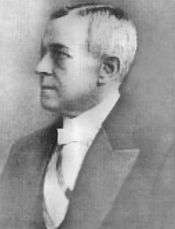Iancu Flondor

Iancu Flondor (August 3, 1865, Storozhynets – October 19, 1924) was an Austro-Hungarian-born ethnic Romanian activist who advocated Bukovina's unifion with the Kingdom of Romania.
He was born in the town of Storozhynets (Romanian: Storojineṭ) in Northern Bukovina (now in Ukraine). His parents were Gheorghe Flondor (1828–1892) and Isabella von Dobrowolski-Buchenthal (1835-1890).[1] Married to Elena de Zotta, he fathered three sons: Şerban (b. 1900 -d.1971), Neagoe (b. 1901-d.1952), and Mircea (b. 1908-d.1928) 19).[2]
During the winter of 1918, Flondor clashed with his rival Aurel Onciul over the political future of Bukovina, a dispute which culminated in the November request by the National Council of Bukovina, headed by Flondor, for an intervention by the Romanian Army into what had become a chaotic Bukovina. Under those circumstances, the Romanian government in Iaşi, wishing to protect the population, decided to send to Bukovina the 8th Division under the command of General Iacob Zadik, who entered Cernăuţi, on 9 November 1918. On 12 November, the National Council of Bukovina effectively took the helm of Bukovina, forming a cabinet headed by Iancu Flondor. On 15/28 November 1918, the debates of Bukovina's General Congress opened at the Metropolitan Palace in Cernăuţi and decided : "The unconditional and eternal union of Bukovina -within its old boundaries up to the rivers Ceremuş, Colacin and Dniester - to the kingdom of Romania".
He died in Cernăuṭi (now Chernivtsi), and was buried in Storojineṭ.
Notes
References
- (Romanian) Ştefan Purici, "Iancu Flondor (1865-1924). O viaţă în slujba dreptăţii", at Ştefan cel Mare University, Suceava
- (Romanian) C. Al. Racovitza, Mihai Pânzaru, "Flondorii", from Magazin Istoric, nr. 6, 2000.
- (Romanian) Cezar Vasiliu, "Dulce Bucovină, veselă grădină", Observatorul, November 15, 2003